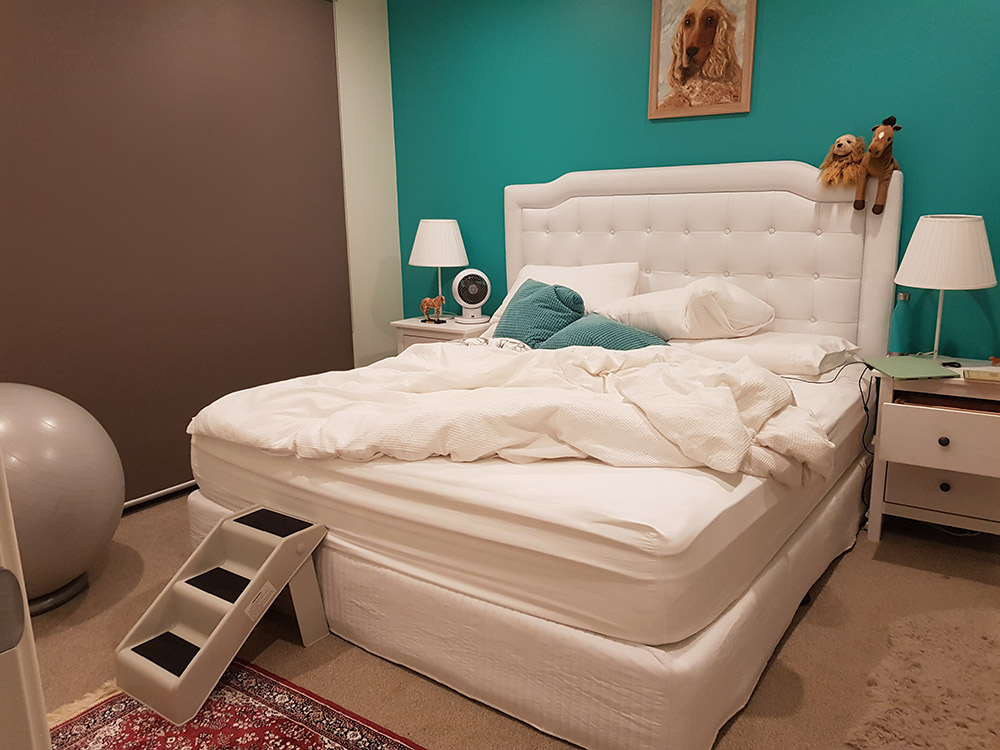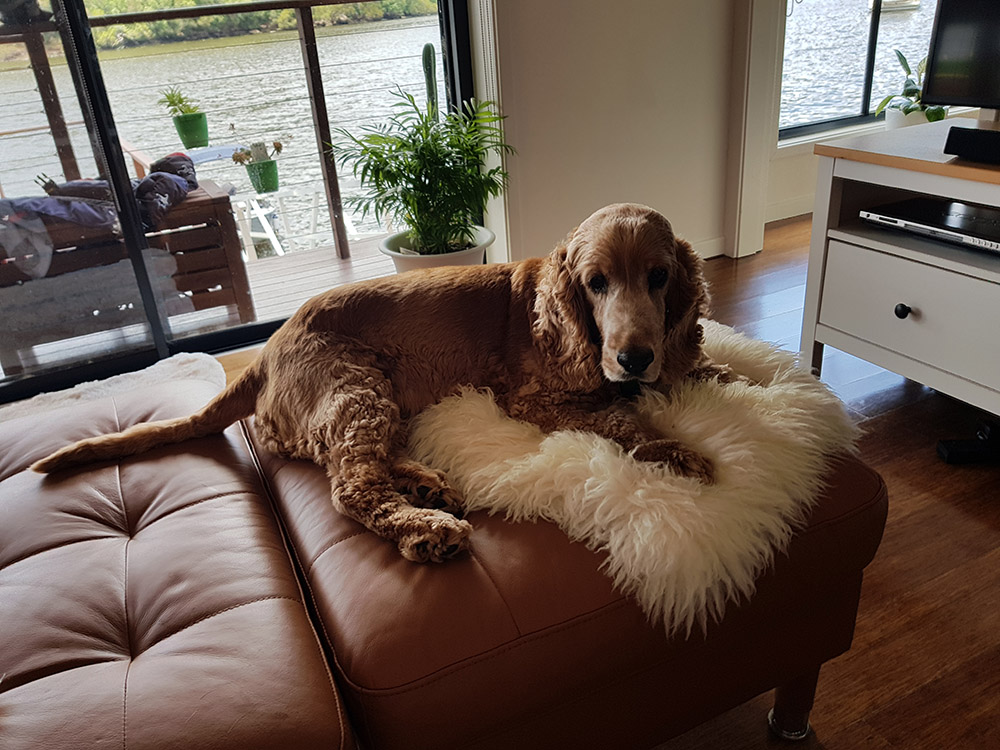Goldie—our beloved English Cocker Spaniel—isn’t a young thing anymore. She’s 14, going on 15 years old. That’s very old for a dog. We know that she’s in the twilight of her life, and we don’t have much time left with her. That’s why every moment is precious!
Nevertheless, Goldie still has the energy of a much younger dog. She howls in excitement when we tell her that it’s time to go out for a walk. She runs and jumps whenever she can. However, although her mind is still young and she tries to do the things that she used to do as a puppy, her body isn’t always quite able to catch up. Jumping up onto raised surfaces is one of those things.
In the past, Goldie used to be able to jump pretty high—over a meter! Nowadays, she struggles to jump up onto the bed or onto the sofa. Often she’ll be able to clear the height, but sometimes, she just doesn’t have the energy to expend on that burst of power needed to propel her upwards, and she’ll end up leaning against the raised surface with her forepaws, wagging her tail, defeated but not down!

Anyway, we thought we’d get Goldie a set of steps to see if they would help her. The steps we bought were pretty compact and light. They were the Anko 37cm steps from Kmart, made of plastic and seemed very sturdy. The also had a weight rating of 35kg, which was more than enough to accommodate Goldie’s 15kg frame.

We were well-pleased with ourselves on the way home. We thought Goldie would love the steps and that she’d no longer need to struggle to get up onto our bed.
On the way home, I joked that Goldie would probably take one look at the steps, try them, and then decide that she’d be able to jump after all!
Anyway, we unboxed the steps, and they looked very promising, albeit small.

At 37cm total height, they provided more than enough clearance for Goldie to easily saunter up to the bed or the sofa if she wanted to. A catch inside the steps made sure that they remained upright and secure. The steps had a grippy, non-slip surface as well.

We took the steps up to the bedroom, and they looked quite cute beside the bed. And then the moment of truth. We got Goldie over and nudged her towards the steps. She wobbled a bit and then wandered to the side, refusing to climb higher than a single step.

We tried to lure her towards the steps again. Same thing. She simply refused to climb them! They were clearly too small for her as well. Or rather, they were the perfect size, but obviously, she wanted to use much larger steps for comfort. That makes sense. We as people don’t want to climb up steps which are exactly our body-width, after all.

And then she did it. She turned away, walked outside the bedroom, turned back to face us, took a running jump, and leapt up onto the bed, just like she had when she was a younger dog.
With a sigh, we packed up the steps back into their original box and prepared to return them to Kmart. Goldie is as sprightly as ever!

Here are a few tips on dealing with doggy hip issues, and choosing the right stepping helper:
- Consult a Veterinarian: Before implementing any changes, consult a veterinarian to diagnose the extent of your dog’s hip issues and get personalized recommendations.
- Choose the Right Steps: Select dog steps that are appropriate for your dog’s size, weight, and mobility level. Opt for steps with a gentle incline and non-slip surface to minimize strain on their hips.
- Place Steps Strategically: Position the dog steps in areas where your dog frequently needs assistance, such as near furniture or stairs. This ensures easy access and encourages your dog to use them regularly.
- Training and Encouragement: Train your dog to use the steps by using treats or toys to lure them up and down. Offer praise and encouragement to reinforce positive behavior.
- Regular Exercise: Incorporate low-impact exercises into your dog’s routine to strengthen their hip muscles and improve mobility. Activities like swimming or short walks on flat surfaces can be beneficial.
- Joint Supplements: Consult your vet about incorporating joint supplements into your dog’s diet to support hip health and reduce inflammation. Glucosamine and chondroitin are common supplements that may help alleviate hip discomfort.
- Comfortable Environment: Ensure your dog’s environment is comfortable and supportive. Use orthopedic bedding to provide cushioning for their hips and joints, especially in areas where they rest frequently.
- Maintain a Healthy Weight: Excess weight puts added strain on your dog’s hips and exacerbates hip issues. Maintain a healthy weight through proper diet and regular exercise to reduce stress on their joints.
- Gentle Massage and Stretching: Incorporate gentle massage and stretching exercises into your dog’s routine to promote flexibility and relieve tension in their hip muscles. Be cautious and gentle, especially if your dog is in pain.
- Regular Monitoring and Adjustments: Monitor your dog’s condition closely and make adjustments to their care plan as needed. This may include adjusting the height or placement of the steps or exploring additional treatment options with your vet. Regular veterinary check-ups are essential for tracking progress and addressing any changes in your dog’s hip health.





